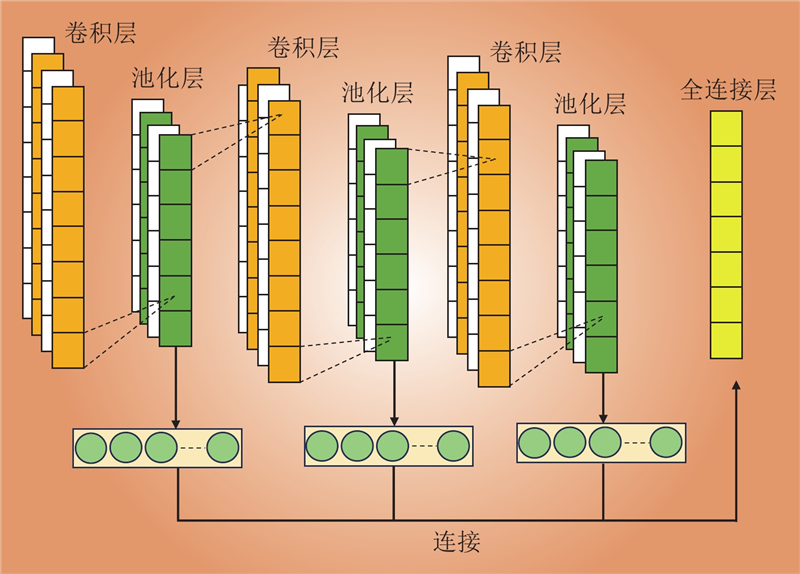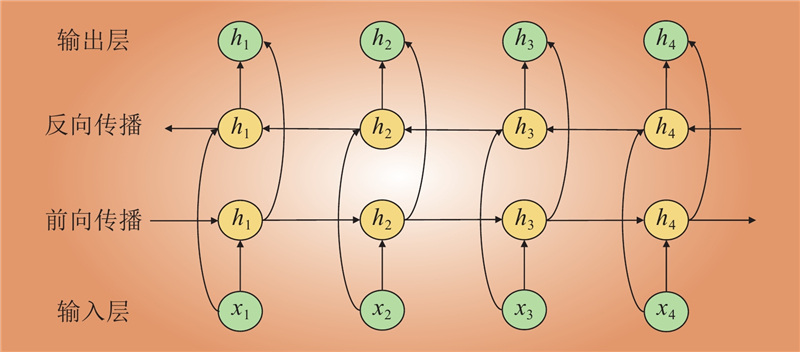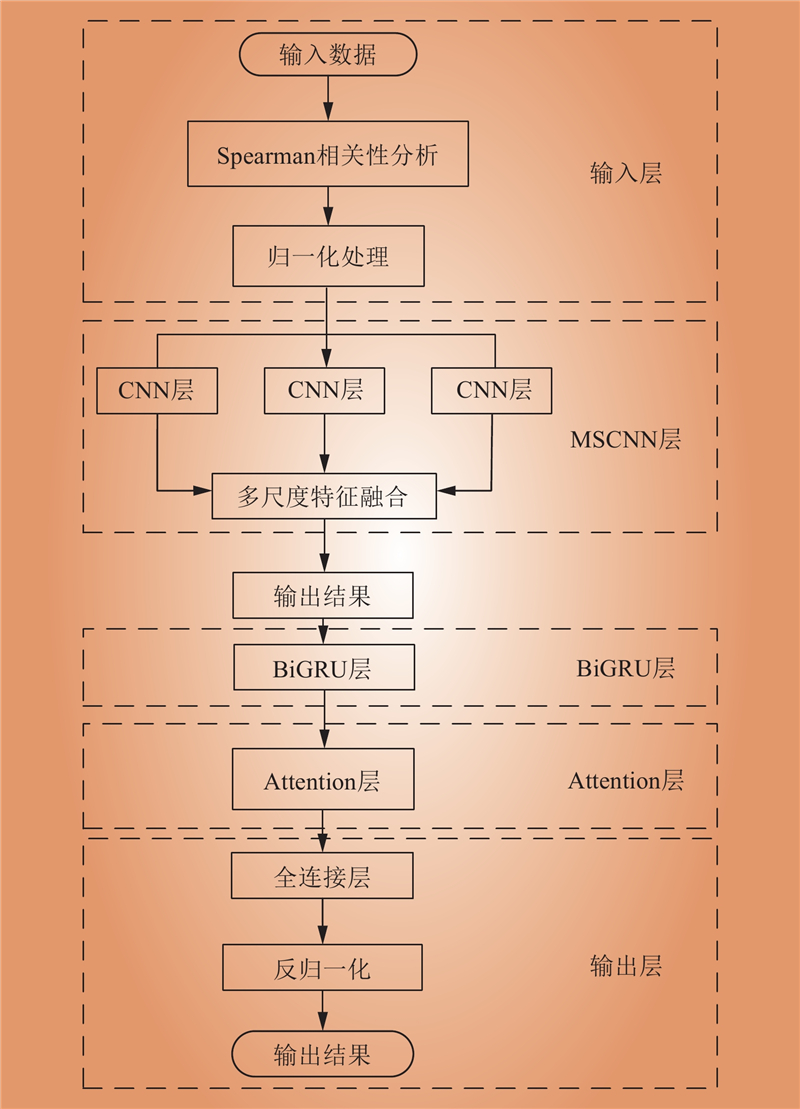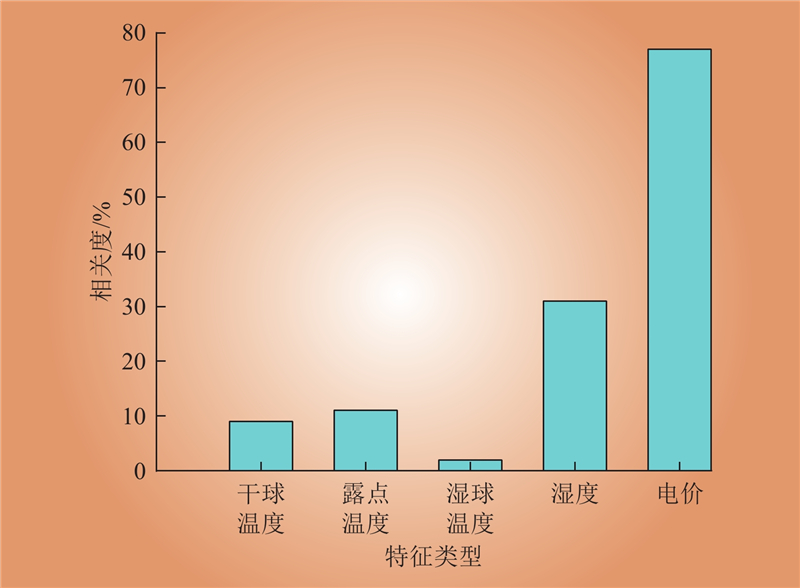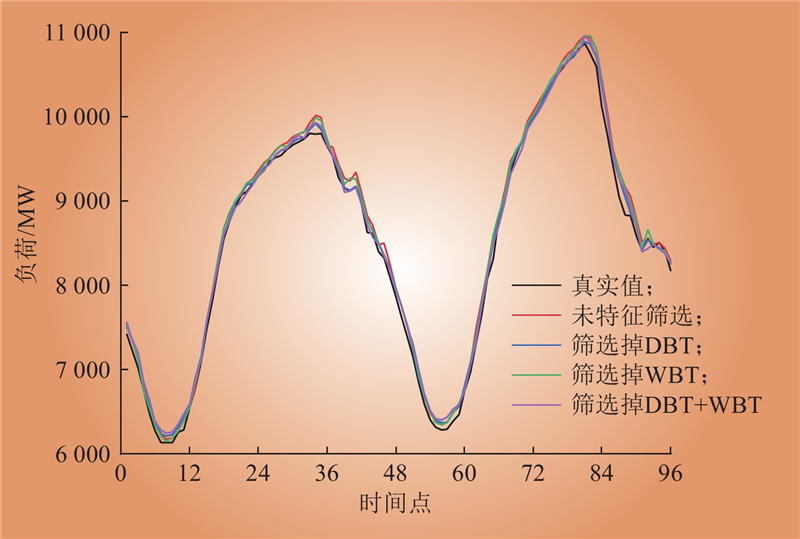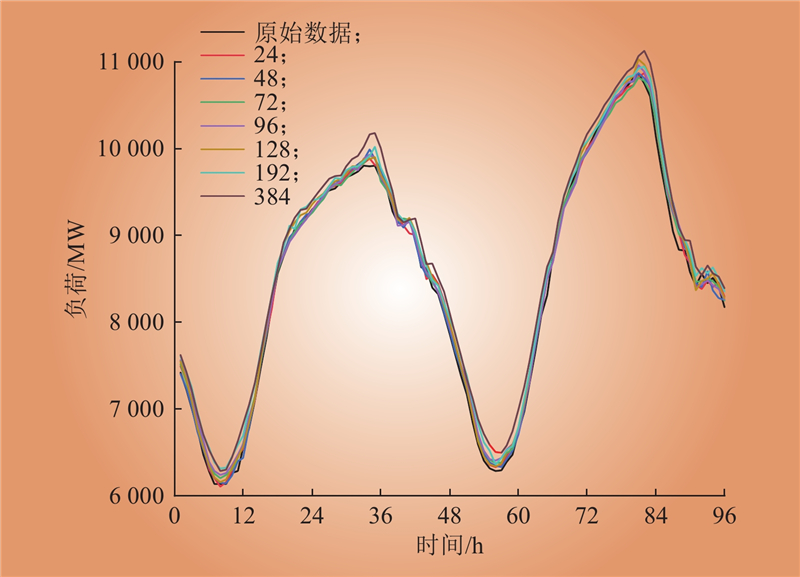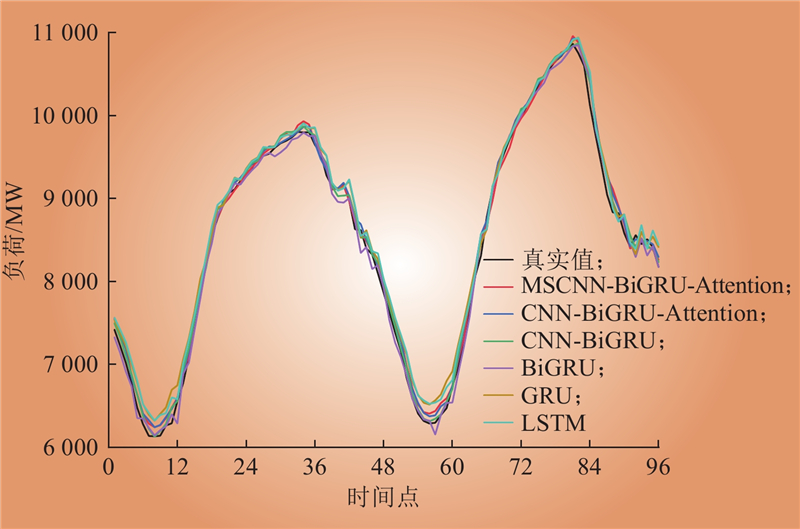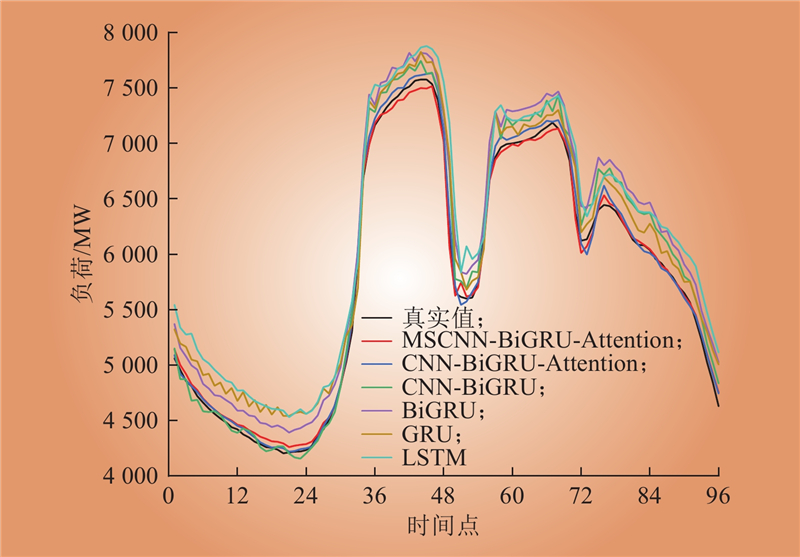| 1 |
徐鹏, 张飞龙, 杜景勃. 深度学习方法在能源负荷预测的应用[J]. 煤气与热力, 2023, 43 (4): 1- 14.
DOI
|
|
XU Peng, ZHANG Feilong, DU Jingbo. Application of deep learning methods in energy load forecasting[J]. Gas & Heat, 2023, 43 (4): 1- 14.
DOI
|
| 2 |
朱明, 夏宇栋, 常凯, 等. 基于粒子群优化算法的空调负荷灰箱模型辨识[J]. 电力科学与技术学报, 2023, 38 (4): 214- 221.
|
|
ZHU Ming, XIA Yudong, CHANG Kai, et al. Identification of grey box model for air conditioning load based on particle swarm optimization algorithm[J]. Journal of Electric Power Science and Technology, 2023, 38 (4): 214- 221.
|
| 3 |
贾巍, 雷才嘉, 方兵华, 等. 供电分区场景下基于数据驱动的负荷密度综合评估及预测方法[J]. 中国电力, 2023, 56 (6): 71- 81.
|
|
JIA Wei, LEI Caijie, FANG Huabing, et al. A comprehensive evaluation and prediction method for load density based on big data under power supply partition scenarios[J]. Electric Power, 2023, 56 (6): 71- 81.
|
| 4 |
刘杰, 从兰美, 夏远洋, 等. 基于DBO-VMD和IWOA-BILSTM神经网络组合模型的短期电力负荷预测[J]. 电力系统保护与控制, 2024, 52 (8): 123- 133.
|
|
LIU Jie, CONG Meilan, XIA Yuanyang, et al. Short-term power load prediction based on DBO-VMD and an IWOA-BILSTM neural network combination model[J]. Power System Protection and Control, 2024, 52 (8): 123- 133.
|
| 5 |
黄冬梅, 陈欢, 王宁, 等. 基于自适应图注意力网络的短期用户负荷预测[J]. 电力系统保护与控制, 2023, 51 (20): 140- 149.
|
|
HUANG Dongmei, CHEN Huan, WANG Ning, et al. Short-term user load prediction based on an adaptive graph attention network[J]. Power System Protection and Control, 2023, 51 (20): 140- 149.
|
| 6 |
孔祥玉, 马玉莹, 艾芊, 等. 新型电力系统多元用户的用电特征建模与用电负荷预测综述[J]. 电力系统自动化, 2023, 47 (13): 2- 17.
DOI
|
|
KONG Xiangyu, MA Yuying, AI Qian, et al. Review on electricity consumption characteristic modeling and load forecasting for diverse users in new power system[J]. Automation of Electric Power Systems, 2023, 47 (13): 2- 17.
DOI
|
| 7 |
姜东良, 李天昊, 刘文浩. 基于相似日和SAE-DBiLSTM模型的短期电力负荷预测[J]. 电气工程学报, 2022, 17 (4): 240- 249.
|
|
JIANG Dongliang, LI Tianhao, LIU Wenhao. Short-term power load forecasting using similar day and SAE-DBiLSTM model[J]. Journal of Electrical Engineering, 2022, 17 (4): 240- 249.
|
| 8 |
李科, 李龙胜, 肖钰皓. 基于时间序列分析的负荷高峰时段用电预测与削峰研究[J]. 光学与光电技术, 2022, 20 (4): 153- 159.
DOI
|
|
LI Ke, LI Longsheng, XIAO Yuhao. Research on power consumption forecasting and peak shaving during load period based on time series analysis[J]. Optics & Optoelectronics Technology, 2022, 20 (4): 153- 159.
DOI
|
| 9 |
MADHUKUMAR M, SEBASTIAN A, LIANG X D, et al. Regression model-based short-term load forecasting for university campus load[J]. IEEE Access, 2022, 10, 8891- 8905.
DOI
|
| 10 |
王艳松, 申晓阳, 李强, 等. 基PCA-GRD-LWR模型的海上油田中长期最大电力负荷预测[J]. 中国石油大学学报(自然科学版), 2023, 47 (2): 129- 135.
|
|
WANG Yansong, SHEN Xiaoyang, LI Qiang, et al. Forecasting of medium and long-term maximum power load for offshore oilfields based on PCA-GRD-LWR model[J]. Journal of China University of Petroleum (Edition of Natural Science), 2023, 47 (2): 129- 135.
|
| 11 |
曾囿钧, 肖先勇, 徐方维. 基于小波变换与BiGRU-NN模型的短期负荷预测方法[J]. 电测与仪表, 2023, 60 (6): 103- 109.
|
|
ZENG Menjun, XIAO Xianyong, XU Fangwei. Short-term load forecasting method based on wavelet transform and BiGRU-NN model[J]. Electrical Measurement & Instrumentation, 2023, 60 (6): 103- 109.
|
| 12 |
魏步晗, 鲍刚, 李振华. 基于支持向量回归预测模型考虑天气因素和分时电价因素的短期电力负荷预测[J]. 电网与清洁能源, 2023, 39 (11): 9- 19.
DOI
|
|
WEI Buhan, BAO Gang, LI Zhenhua. Short-term electricity load forecasting based on support vector regression forecasting model considering weather factors and time-of-use tariff factors[J]. Power System and Clean Energy, 2023, 39 (11): 9- 19.
DOI
|
| 13 |
蔡颖凯, 张冶, 曹世龙, 等. 基于决策树算法的短期电力负荷大数据预测模型[J]. 制造业自动化, 2022, 44 (06): 152- 155, 182.
DOI
|
|
CAI Yingkai, ZHANG Ye, CAO Shilong, et al. Short-term power load big data forecasting model based on decision tree algorithm[J]. Manufacturing Automation, 2022, 44 (06): 152- 155, 182.
DOI
|
| 14 |
SHEN Q, MO L, LIU G J, et al. Short-term load forecasting based on multi-scale ensemble deep learning neural network[J]. IEEE Access, 2023, 11, 111963- 111975.
DOI
|
| 15 |
钱育树, 孔钰婷, 黄聪. 电力负荷预测研究综述[J]. 四川电力技术, 2023, 46 (4): 37- 43, 58.
|
|
QIAN Yushu, KONG Yuting, HUANG Cong. Review of power load forecasting[J]. Sichuan Electric Power Technology, 2023, 46 (4): 37- 43, 58.
|
| 16 |
LI Z L, LI Y Z, LIU Y, et al. Deep learning based densely connected network for load forecasting[J]. IEEE Transactions on Power Systems, 2021, 36 (4): 2829- 2840.
DOI
|
| 17 |
KONG W C, DONG Z Y, JIA Y W, et al. Short-term residential load forecasting based on LSTM recurrent neural network[J]. IEEE Transactions on Smart Grid, 2019, 10 (1): 841- 851.
DOI
|
| 18 |
曾囿钧, 肖先勇, 徐方维, 等. 基于CNN-BiGRU-NN模型的短期负荷预测方法[J]. 中国电力, 2021, 54 (9): 17- 23.
|
|
ZENG Youjun, XIAO Xianyong, XU Fangwei, et al. A short-term load forecasting method based on CNN-BiGRU-NN model[J]. Electric Power, 2021, 54 (9): 17- 23.
|
| 19 |
张宇帆, 艾芊, 林琳, 等. 基于深度长短时记忆网络的区域级超短期负荷预测方法[J]. 电网技术, 2019, 43 (6): 1884- 1892.
|
|
ZHANG Yufan, AI Qian, LIN Lin, et al. A very short-term load forecasting method based on deep LSTM RNN at zone level[J]. Power System Technology, 2019, 43 (6): 1884- 1892.
|
| 20 |
关蕾. 基于改进DBN的用电负荷预测建模与仿真[J]. 微型电脑应用, 2022, 38 (2): 42- 45, 48.
DOI
|
|
GUAN Lei. Modeling and simulation of power load forecasting based on improved DBN[J]. Microcomputer Applications, 2022, 38 (2): 42- 45, 48.
DOI
|
| 21 |
赵厚翔, 沈晓东, 吕林, 等. 基于GAN的负荷数据修复及其在EV短期负荷预测中的应用[J]. 电力系统自动化, 2021, 45 (16): 143- 151.
DOI
|
|
ZHAO Houxiang, SHEN Xiaodong, LYU Lin, et al. Load data restoration based on generative adversarial network and its application in short-term load forecasting of electric vehicle[J]. Automation of Electric Power Systems, 2021, 45 (16): 143- 151.
DOI
|
| 22 |
任爽, 杨凯, 商继财, 等. 基于CNN-BiGRU-Attention的短期电力负荷预测[J]. 电气工程学报, 2024, 19 (1): 344- 350.
|
|
REN Shuang, YANG Kai, SHANG Jicai, et al. Short-term power load forecasting based on CNN-BiGRU-Attention[J]. Journal of Electrical Engineering, 2024, 19 (1): 344- 350.
|
| 23 |
安文杰, 陈长征, 田淼, 等. 基于MSCNNSA-BiGRU的变工况风电机组滚动轴承故障诊断研究[J]. 机电工程, 2022, 39 (8): 1096- 1103.
DOI
|
|
AN Wenjie, CHEN Changzheng, TIAN Miao, et al. Rolling bearing fault diagnosis of wind turbine under variable working conditions based on MSCNSA-BIGRU[J]. Journal of Mechanical & Electrical Engineering, 2022, 39 (8): 1096- 1103.
DOI
|
| 24 |
邵必林, 纪丹阳. 基于VMD-SE的电力负荷分量的多特征短期预测[J]. 中国电力, 2024, 57 (4): 162- 170.
|
|
SHAO Bilin, JI Danyang. Multi-feature Short-term prediction of power load components based on VMD-SE[J]. Electric Power, 2024, 57 (4): 162- 170.
|
| 25 |
吴军英, 路欣, 刘宏, 等. 基于Spearman-GCN-GRU模型的超短期多区域电力负荷预测[J]. 中国电力, 2024, 57 (6): 131- 140.
|
|
WU Junying, LU Xin, LIU Hong, et al. Ultra-short-term multi-region power load forecasting based on Spearman-GCN-GRU Model[J]. Electric Power, 2024, 57 (6): 131- 140.
|


